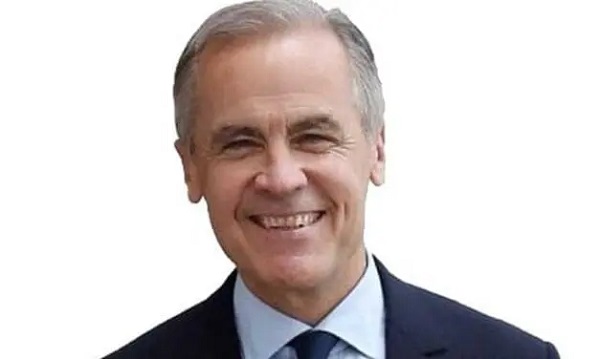Brownstone Institute
Pfizer Lied to Us Again
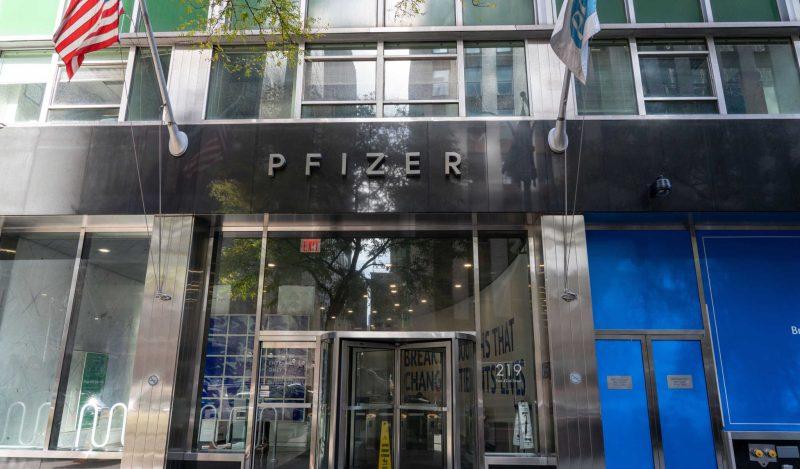
From Brownstone Institute
BY
There used to be a time where claims from pharmaceutical companies may have been treated with some degree of skepticism from major institutions and media outlets.
Yet in late 2020 and into 2021, suddenly skepticism turned to complete blind faith. But what changed? Why, political incentives, of course!
Initially, Covid vaccines produced by Pfizer were seen as dangerous and untested; they were considered a Trump vaccine that only idiots who were willing to risk their own health would take. However when the 2020 election had been officially decided, and Biden and his political allies represented the Covid vaccines as the pathway out of the pandemic, a moral choice that would help yourself and others, narratives and incentives changed dramatically.
Pfizer became a heroic symbol of virtue, and all questioning of Covid vaccines was grounds for immediate expulsion from polite society, regardless of the actual efficacy of Pfizer’s products.
Much of the blame for the vaccines’ underperformance could be placed on Pfizer itself; the company relentlessly promoted hopelessly inaccurate efficacy estimates and supported efforts to unnecessarily mandate mRNA shots.
Sure enough, on the back of progressive orthodoxy, corporate and institutional incompetence and media activism, they proudly reported record revenues.
We all know how that turned out in 2022 and 2023.
Skepticism towards Pfizer’s vaccine was obviously quite well warranted. And it turns out that now we, and of course, Pfizer’s chief promoters in the media and public health class should have been even more skeptical.
They weren’t.
Pfizer’s Claims On Covid Treatments Were Wildly Inaccurate
As the Covid vaccines failed spectacularly to stop the spread of infections and did nothing to lessen all-cause mortality or even decrease population level Covid-associated deaths in highly vaccinated countries, Pfizer saw another opportunity.
Sure, their signature product failed to perform as expected. So why not create another one as an antidote?
Enter Paxlovid.
Paxlovid, an antiviral drug, was supposed to help individuals with symptomatic Covid, who’d already been infected, recover more quickly and lessen the risk of severe illness. Sounds great right?
It would appear that it sure did to Anthony Fauci and the cadre of media-promoted “experts.”
Fauci praised Paxlovid in 2022, after the mRNA vaccines and booster doses failed to prevent him from contracting Covid. Bizarrely, Fauci implied that the same Pfizer products that he demanded everyone take would not have been enough to keep him healthy, saying that he believed Paxlovid had kept him out of the hospital.

Never mind, of course, that Fauci had a “rebound” case of Covid-19 after taking Paxlovid and getting vaccinated and boosted. Acknowledging imperfections would undercut his desire to get everyone to take more of his preferred products.
Paxlovid made headlines again later in 2022 as Rochelle Walensky also praised Pfizer’s efforts, despite once again testing positive for “rebound” Covid after Paxlovid treatments.

Even today, the CDC’s own website says Paxlovid is an “effective” treatment for those who’ve contracted the virus and want to avoid severe illness.
There’s just one problem; it’s not true.
A newly released study on Paxlovid on randomized adults with symptomatic Covid; one subset was given Paxlovid (nirmatrelvir-ritonavir) or a placebo every 12 hours for five days, with the intent of determining how effective it was at “sustained alleviation” of Covid-19 symptoms.
In this phase 2–3 trial, we randomly assigned adults who had confirmed Covid-19 with symptom onset within the past 5 days in a 1:1 ratio to receive nirmatrelvir–ritonavir or placebo every 12 hours for 5 days. Patients who were fully vaccinated against Covid-19 and who had at least one risk factor for severe disease, as well as patients without such risk factors who had never been vaccinated against Covid-19 or had not been vaccinated within the previous year, were eligible for participation. Participants logged the presence and severity of prespecified Covid-19 signs and symptoms daily from day 1 through day 28. The primary end point was the time to sustained alleviation of all targeted Covid-19 signs and symptoms. Covid-19–related hospitalization and death from any cause were also assessed through day 28.
Spoiler alert: it wasn’t effective at all.
Their measured results revealed that there was effectively no difference whatsoever in the “sustained alleviation” of symptoms between Paxlovid and a placebo. Those taking Pfizer’s miracle antiviral treatment saw their “signs and symptoms” resolve after 12 days, while the placebo recipients took 13 days.
The median time to sustained alleviation of all targeted signs and symptoms of Covid-19 was 12 days in the nirmatrelvir–ritonavir group and 13 days in the placebo group (P=0.60). Five participants (0.8%) in the nirmatrelvir–ritonavir group and 10 (1.6%) in the placebo group were hospitalized for Covid-19 or died from any cause (difference, −0.8 percentage points; 95% confidence interval, −2.0 to 0.4).
This is the product that to this day is relentlessly promoted by the CDC, the media, and politicians as an effective tool to reduce the severity of symptoms and the length of illness. And it was virtually meaningless.
Even with regards to the most severe outcomes, hospitalization, and death, the difference was negligible. Confidence intervals for the difference in outcome even stretched to a positive relationship, meaning that it’s within the bounds of possibility that more people died or were hospitalized after taking Paxlovid than a placebo.
Succinctly, the researchers confirmed in their summary that there was no difference between the two treatments.
The time to sustained alleviation of all signs and symptoms of Covid-19 did not differ significantly between participants who received nirmatrelvir–ritonavir and those who received placebo.
But who are these researchers, you might ask…surely they’re fringe scientists, desperate to undercut a big, bad pharmaceutical company, right? How else could their conclusions so thoroughly undermine Pfizer?
Let’s take a look at the disclosure to see who funded this study, designed the trial, conducted it, collected the data, and analyzed the results. Surely, that will reveal the nefarious intentions behind this dastardly attempt to cut at the heart of Pfizer’s miracle drug.
Pfizer was responsible for the trial design and conduct and for data collection, analysis, and interpretation. The first draft of the manuscript was written by medical writers (funded by Pfizer) under direction from the authors.
Oh. Oh no.
Pfizer created the trial, conducted it, collected the data, and analyzed it. And it found that Paxlovid made no difference to the resolution of symptoms or with keeping people alive or out of the hospital. That has to sting.
Even worse, Covid vaccination was once again proven to be almost entirely irrelevant where results were concerned. Results were the same between “high-risk subgroups,” meaning those who had been vaccinated but had an elevated risk for more serious symptoms, and those who had never been vaccinated or had received the last dose more than a year ago.
Similar results were observed in the high-risk subgroup (i.e., participants who had been vaccinated and had at least one risk factor for severe illness) and in the standard-risk subgroup (i.e., those who had no risk factors for severe illness and had never been vaccinated or had not been vaccinated within the previous 12 months).
So not only did Paxlovid not make a difference, but vaccination status AND Paxlovid wasn’t enough to create a sizable gap in outcomes between healthy, unvaccinated individuals.
But wait, there’s more.
Viral load rebounds were also more common in the Paxlovid group, and symptom and viral load rebounds combined were more common among those taking Pfizer’s treatment. While percentages were generally low, other studies have pegged Paxlovid-associated rebound as occurring nearly one quarter of the time.
So it’s not particularly effective at reducing symptoms or resolving them more quickly, doesn’t lead to statistically significant improvements in the most severe outcomes, and is more likely to result in a rebound case of the illness it’s supposed to be protecting you from.
Sounds exactly like the type of product that Fauci, Walensky, and the CDC would praise, doesn’t it?
Paxlovid is the entire Covid-pharmaceutical complex summarized perfectly. Created to solve a problem that was supposed to be fixed by another product…understudied, overhyped by the “experts,” and prematurely authorized by a desperate FDA…and ultimately shown to be mostly ineffective.
Once again, the actual science disproves The Science™. And once again, we’ll get no acknowledgment of it or apologies for the billions of taxpayer dollars wasted. Can’t wait to see what Pfizer does for an encore.
Republished from the author’s Substack
Brownstone Institute
FDA Exposed: Hundreds of Drugs Approved without Proof They Work

From the Brownstone Institute
By
The US Food and Drug Administration (FDA) has approved hundreds of drugs without proof that they work—and in some cases, despite evidence that they cause harm.
That’s the finding of a blistering two-year investigation by medical journalists Jeanne Lenzer and Shannon Brownlee, published by The Lever.
Reviewing more than 400 drug approvals between 2013 and 2022, the authors found the agency repeatedly ignored its own scientific standards.
One expert put it bluntly—the FDA’s threshold for evidence “can’t go any lower because it’s already in the dirt.”
A System Built on Weak Evidence
The findings were damning—73% of drugs approved by the FDA during the study period failed to meet all four basic criteria for demonstrating “substantial evidence” of effectiveness.
Those four criteria—presence of a control group, replication in two well-conducted trials, blinding of participants and investigators, and the use of clinical endpoints like symptom relief or extended survival—are supposed to be the bedrock of drug evaluation.
Yet only 28% of drugs met all four criteria—40 drugs met none.
These aren’t obscure technicalities—they are the most basic safeguards to protect patients from ineffective or dangerous treatments.
But under political and industry pressure, the FDA has increasingly abandoned them in favour of speed and so-called “regulatory flexibility.”
Since the early 1990s, the agency has relied heavily on expedited pathways that fast-track drugs to market.
In theory, this balances urgency with scientific rigour. In practice, it has flipped the process. Companies can now get drugs approved before proving that they work, with the promise of follow-up trials later.
But, as Lenzer and Brownlee revealed, “Nearly half of the required follow-up studies are never completed—and those that are often fail to show the drugs work, even while they remain on the market.”
“This represents a seismic shift in FDA regulation that has been quietly accomplished with virtually no awareness by doctors or the public,” they added.
More than half the approvals examined relied on preliminary data—not solid evidence that patients lived longer, felt better, or functioned more effectively.
And even when follow-up studies are conducted, many rely on the same flawed surrogate measures rather than hard clinical outcomes.
The result: a regulatory system where the FDA no longer acts as a gatekeeper—but as a passive observer.
Cancer Drugs: High Stakes, Low Standards
Nowhere is this failure more visible than in oncology.
Only 3 out of 123 cancer drugs approved between 2013 and 2022 met all four of the FDA’s basic scientific standards.
Most—81%—were approved based on surrogate endpoints like tumour shrinkage, without any evidence that they improved survival or quality of life.
Take Copiktra, for example—a drug approved in 2018 for blood cancers. The FDA gave it the green light based on improved “progression-free survival,” a measure of how long a tumour stays stable.
But a review of post-marketing data showed that patients taking Copiktra died 11 months earlier than those on a comparator drug.
It took six years after those studies showed the drug reduced patients’ survival for the FDA to warn the public that Copiktra should not be used as a first- or second-line treatment for certain types of leukaemia and lymphoma, citing “an increased risk of treatment-related mortality.”
Elmiron: Ineffective, Dangerous—And Still on the Market
Another striking case is Elmiron, approved in 1996 for interstitial cystitis—a painful bladder condition.
The FDA authorized it based on “close to zero data,” on the condition that the company conduct a follow-up study to determine whether it actually worked.
That study wasn’t completed for 18 years—and when it was, it showed Elmiron was no better than placebo.
In the meantime, hundreds of patients suffered vision loss or blindness. Others were hospitalized with colitis. Some died.
Yet Elmiron is still on the market today. Doctors continue to prescribe it.
“Hundreds of thousands of patients have been exposed to the drug, and the American Urological Association lists it as the only FDA-approved medication for interstitial cystitis,” Lenzer and Brownlee reported.
“Dangling Approvals” and Regulatory Paralysis
The FDA even has a term—”dangling approvals”—for drugs that remain on the market despite failed or missing follow-up trials.
One notorious case is Avastin, approved in 2008 for metastatic breast cancer.
It was fast-tracked, again, based on ‘progression-free survival.’ But after five clinical trials showed no improvement in overall survival—and raised serious safety concerns—the FDA moved to revoke its approval for metastatic breast cancer.
The backlash was intense.
Drug companies and patient advocacy groups launched a campaign to keep Avastin on the market. FDA staff received violent threats. Police were posted outside the agency’s building.
The fallout was so severe that for more than two decades afterwards, the FDA did not initiate another involuntary drug withdrawal in the face of industry opposition.
Billions Wasted, Thousands Harmed
Between 2018 and 2021, US taxpayers—through Medicare and Medicaid—paid $18 billion for drugs approved under the condition that follow-up studies would be conducted. Many never were.
The cost in lives is even higher.
A 2015 study found that 86% of cancer drugs approved between 2008 and 2012 based on surrogate outcomes showed no evidence that they helped patients live longer.
An estimated 128,000 Americans die each year from the effects of properly prescribed medications—excluding opioid overdoses. That’s more than all deaths from illegal drugs combined.
A 2024 analysis by Danish physician Peter Gøtzsche found that adverse effects from prescription medicines now rank among the top three causes of death globally.
Doctors Misled by the Drug Labels
Despite the scale of the problem, most patients—and most doctors—have no idea.
A 2016 survey published in JAMA asked practising physicians a simple question—what does FDA approval actually mean?
Only 6% got it right.
The rest assumed that it meant the drug had shown clear, clinically meaningful benefits—such as helping patients live longer or feel better—and that the data was statistically sound.
But the FDA requires none of that.
Drugs can be approved based on a single small study, a surrogate endpoint, or marginal statistical findings. Labels are often based on limited data, yet many doctors take them at face value.
Harvard researcher Aaron Kesselheim, who led the survey, said the results were “disappointing, but not entirely surprising,” noting that few doctors are taught about how the FDA’s regulatory process actually works.
Instead, physicians often rely on labels, marketing, or assumptions—believing that if the FDA has authorized a drug, it must be both safe and effective.
But as The Lever investigation shows, that is not a safe assumption.
And without that knowledge, even well-meaning physicians may prescribe drugs that do little good—and cause real harm.
Who Is the FDA Working for?
In interviews with more than 100 experts, patients, and former regulators, Lenzer and Brownlee found widespread concern that the FDA has lost its way.
Many pointed to the agency’s dependence on industry money. A BMJ investigation in 2022 found that user fees now fund two-thirds of the FDA’s drug review budget—raising serious questions about independence.

Yale physician and regulatory expert Reshma Ramachandran said the system is in urgent need of reform.
“We need an agency that’s independent from the industry it regulates and that uses high-quality science to assess the safety and efficacy of new drugs,” she told The Lever. “Without that, we might as well go back to the days of snake oil and patent medicines.”
For now, patients remain unwitting participants in a vast, unspoken experiment—taking drugs that may never have been properly tested, trusting a regulator that too often fails to protect them.
And as Lenzer and Brownlee conclude, that trust is increasingly misplaced.
- Investigative report by Jeanne Lenzer and Shannon Brownlee at The Lever [link]
- Searchable public drug approval database [link]
- See my talk: Failure of Drug Regulation: Declining standards and institutional corruption
Republished from the author’s Substack
Brownstone Institute
Anthony Fauci Gets Demolished by White House in New Covid Update
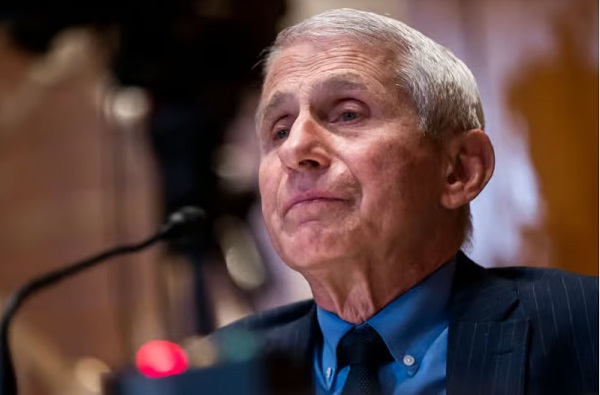
From the Brownstone Institute
By
Anthony Fauci must be furious.
He spent years proudly being the public face of the country’s response to the Covid-19 pandemic. He did, however, flip-flop on almost every major issue, seamlessly managing to shift his guidance based on current political whims and an enormous desire to coerce behavior.
Nowhere was this more obvious than his dictates on masks. If you recall, in February 2020, Fauci infamously stated on 60 Minutes that masks didn’t work. That they didn’t provide the protection people thought they did, there were gaps in the fit, and wearing masks could actually make things worse by encouraging wearers to touch their face.
Just a few months later, he did a 180, then backtracked by making up a post-hoc justification for his initial remarks. Laughably, Fauci said that he recommended against masks to protect supply for healthcare workers, as if hospitals would ever buy cloth masks on Amazon like the general public.
Later in interviews, he guaranteed that cities or states that listened to his advice would fare better than those that didn’t. Masks would limit Covid transmission so effectively, he believed, that it would be immediately obvious which states had mandates and which didn’t. It was obvious, but not in the way he expected.

And now, finally, after years of being proven wrong, the White House has officially and thoroughly rebuked Fauci in every conceivable way.
White House Covid Page Points Out Fauci’s Duplicitous Guidance
A new White House official page points out, in detail, exactly where Fauci and the public health expert class went wrong on Covid.
It starts by laying out the case for the lab-leak origin of the coronavirus, with explanations of how Fauci and his partners misled the public by obscuring information and evidence. How they used the “FOIA lady” to hide emails, used private communications to avoid scrutiny, and downplayed the conduct of EcoHealth Alliance because they helped fund it.
They roast the World Health Organization for caving to China and attempting to broaden its powers in the aftermath of “abject failure.”
“The WHO’s response to the COVID-19 pandemic was an abject failure because it caved to pressure from the Chinese Communist Party and placed China’s political interests ahead of its international duties. Further, the WHO’s newest effort to solve the problems exacerbated by the COVID-19 pandemic — via a “Pandemic Treaty” — may harm the United States,” the site reads.
Social distancing is criticized, correctly pointing out that Fauci testified that there was no scientific data or evidence to support their specific recommendations.
“The ‘6 feet apart’ social distancing recommendation — which shut down schools and small business across the country — was arbitrary and not based on science. During closed door testimony, Dr. Fauci testified that the guidance ‘sort of just appeared.’”
There’s another section demolishing the extended lockdowns that came into effect in blue states like California, Illinois, and New York. Even the initial lockdown, the “15 Days to Slow the Spread,” was a poorly reasoned policy that had no chance of working; extended closures were immensely harmful with no demonstrable benefit.
“Prolonged lockdowns caused immeasurable harm to not only the American economy, but also to the mental and physical health of Americans, with a particularly negative effect on younger citizens. Rather than prioritizing the protection of the most vulnerable populations, federal and state government policies forced millions of Americans to forgo crucial elements of a healthy and financially sound life,” it says.
Then there’s the good stuff: mask mandates. While there’s plenty more detail that could be added, it’s immensely rewarding to see, finally, the truth on an official White House website. Masks don’t work. There’s no evidence supporting mandates, and public health, especially Fauci, flip-flopped without supporting data.
“There was no conclusive evidence that masks effectively protected Americans from COVID-19. Public health officials flipped-flopped on the efficacy of masks without providing Americans scientific data — causing a massive uptick in public distrust.”
This is inarguably true. There were no new studies or data justifying the flip-flop, just wishful thinking and guessing based on results in Asia. It was an inexcusable, world-changing policy that had no basis in evidence, but was treated as equivalent to gospel truth by a willing media and left-wing politicians.
Over time, the CDC and Fauci relied on ridiculous “studies” that were quickly debunked, anecdotes, and ever-shifting goal posts. Wear one cloth mask turned to wear a surgical mask. That turned into “wear two masks,” then wear an N95, then wear two N95s.
All the while ignoring that jurisdictions that tried “high-quality” mask mandates also failed in spectacular fashion.

And that the only high-quality evidence review on masking confirmed no masks worked, even N95s, to prevent Covid transmission, as well as hearing that the CDC knew masks didn’t work anyway.
The website ends with a complete and thorough rebuke of the public health establishment and the Biden administration’s disastrous efforts to censor those who disagreed.
“Public health officials often mislead the American people through conflicting messaging, knee-jerk reactions, and a lack of transparency. Most egregiously, the federal government demonized alternative treatments and disfavored narratives, such as the lab-leak theory, in a shameful effort to coerce and control the American people’s health decisions.
When those efforts failed, the Biden Administration resorted to ‘outright censorship—coercing and colluding with the world’s largest social media companies to censor all COVID-19-related dissent.’”
About time these truths are acknowledged in a public, authoritative manner. Masks don’t work. Lockdowns don’t work. Fauci lied and helped cover up damning evidence.
If only this website had been available years ago.
Though, of course, knowing the media’s political beliefs, they’d have ignored it then, too.
Republished from the author’s Substack
-
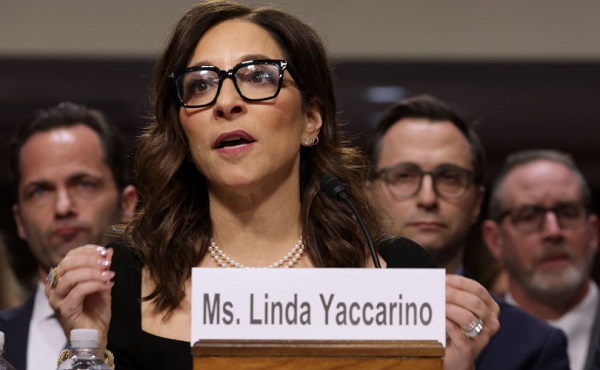
 Business1 day ago
Business1 day agoWEF-linked Linda Yaccarino to step down as CEO of X
-

 Automotive2 days ago
Automotive2 days agoFederal government should swiftly axe foolish EV mandate
-
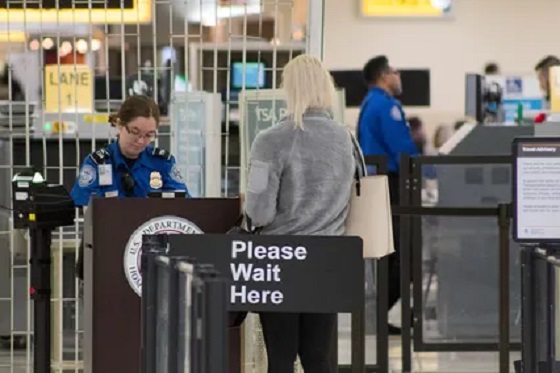
 International2 days ago
International2 days agoNo more shoes off: Trump ends TSA’s decades-old rule
-

 Alberta2 days ago
Alberta2 days ago‘Far too serious for such uninformed, careless journalism’: Complaint filed against Globe and Mail article challenging Alberta’s gender surgery law
-

 Freedom Convoy2 days ago
Freedom Convoy2 days agoCourt Orders Bank Freezing Records in Freedom Convoy Case
-

 Crime2 days ago
Crime2 days agoTucker Carlson: US intelligence is shielding Epstein network, not President Trump
-

 Business1 day ago
Business1 day ago‘Experts’ Warned Free Markets Would Ruin Argentina — Looks Like They Were Dead Wrong
-

 International1 day ago
International1 day agoSecret Service suspends six agents nearly a year after Trump assassination attempt



